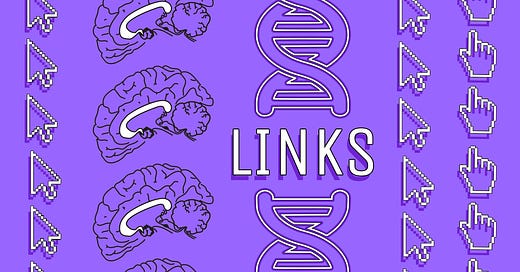LINKS - October 25th, 2023
Welcome to LINKS — my attempt to provide Rhapsody readers with five interesting stories that tell us something about what it means to be human. LINKS is published every Wednesday. Have a link you want to share? Drop it in the comments.
Seaweed was common food in Europe for thousands of years, researchers find
“It is unclear how important seaweed was as a food, but the researchers say it could have been regularly foraged, similar to the way mushrooms and shellfish are still gathered to supplement other food sources today. However, it gradually fell off the menu, becoming a famine food and animal fodder.”
Neuroimaging study reveals hate speech dulls brain’s empathy responses
By Vladimir Hedrih, PsyPost.org
“An experimental neuroimaging study in Poland found that exposure to hate speech diminishes the brain’s response to stories about other people suffering. The effect was present irrespective of the group membership of the person suffering in the story – whether they were Polish, like the participants, or Arab. The study was published in Scientific Reports.”
People Who Speak Backward Reveal the Brain’s Endless Ability to Play with Language
By María de los Ángeles Orfila, Scientific American
“One of the study’s findings shows that the participants had an ability to instantly engage in word reversal that could not be explained by, say, having a superior working memory (the type of memory that allows people to briefly remember a telephone number, for example). Additionally, these individuals did not exhibit any other reversal skills, such as mirror writing, or writing in reverse.”
11,000-year-old statue of giant man clutching penis unearthed in Turkey
“The purpose of the recently found sculptures is unclear. ‘The Karahan Tepe finds strike me as the most interesting,’ Ted Banning, an anthropology professor at the University of Toronto who is not involved with the research, told Live Science in an email. ‘Any interpretation of the statue is conjectural at this point,’ Banning said but suggested it was likely that the person shown is dead. It may represent ‘"an important ancestor associated with the building in which it was found.’”
The mysterious California mansion that spawned a haunted house craze
By Roger Luckhurst, National Geographic
“The mansion was one of the inspirations for Shirley Jackson’s classic 1959 novel The Haunting of Hill House—a key gothic novel that portrays a house as a reserve of malignant energy. The famous opening paragraph tells us that the house “stood by itself against its hills, holding darkness within.” In the novel a group of paranormal investigators stay in the house, which they only belatedly realize is feeding off disturbed psychic powers that are conjuring murderous, long buried resentments.”




